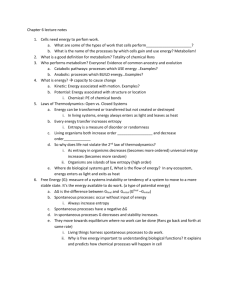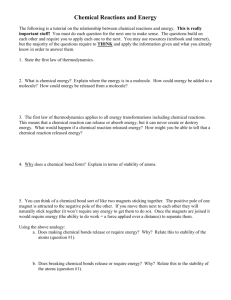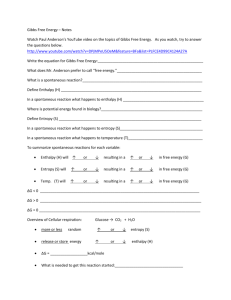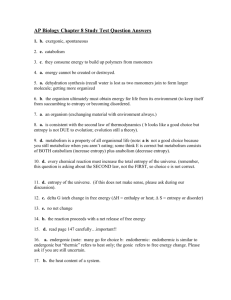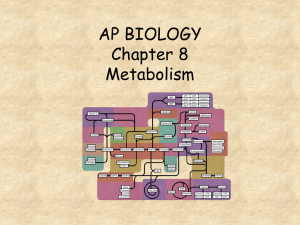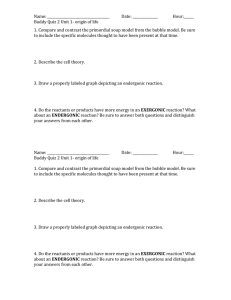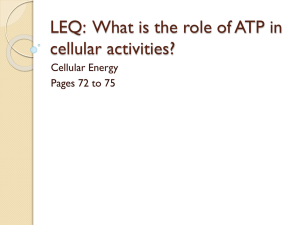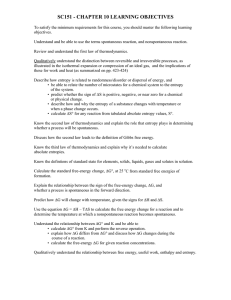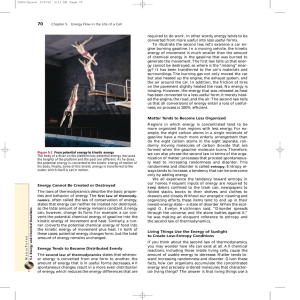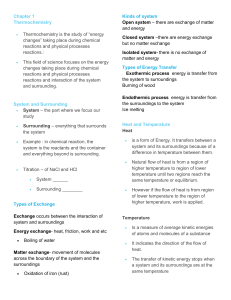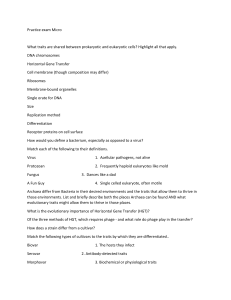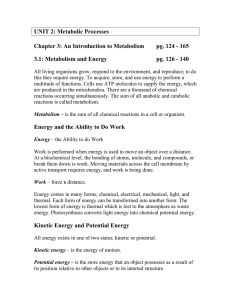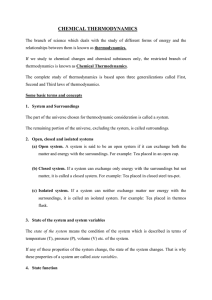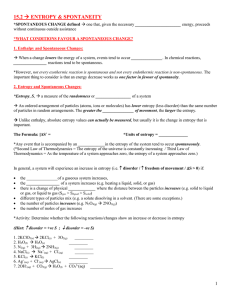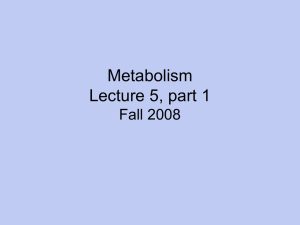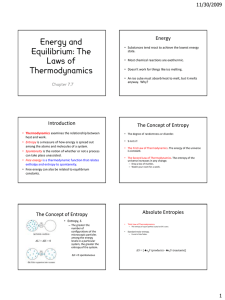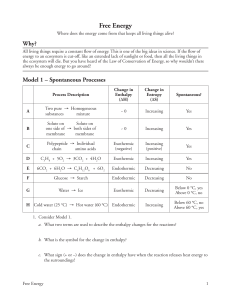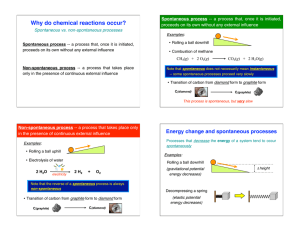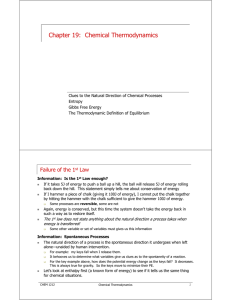Introduction to Metabolism
advertisement
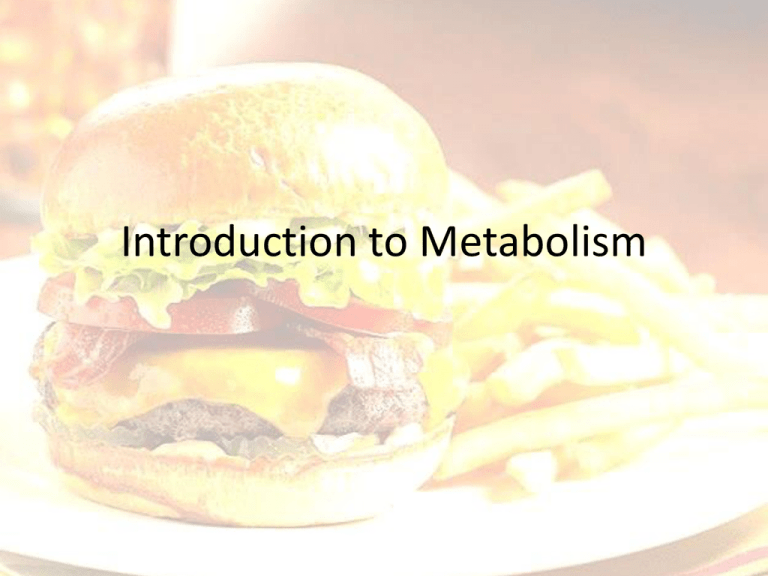
Introduction to Metabolism Metabolism • • • • Living organisms are full of chemical reactions Produce and supply energy for cellular work Energy is capacity to do work Two states of energy – Kinetic – Potential States of Energy • Ability to do work • Kinetic energy – Energy of motion • Potential energy – Stored energy – Dependent on location and structure – Chemical potential energy – Gravitation potential energy • Forms of Energy First Law of Thermodynamics • Total amount of energy in any closed system is constant. Energy cannot be created or destroyed; it can only be converted from one form to another. If a physical system gains an amount of energy, another physical system must experience a loss of energy of the same amount. Energy from Chemical Bonds Chemical Reactions • Energy changes in chemical reactions • Chemical reactions involve breaking and forming of new bonds Bond Energy • Measure of strength or stability of a covalent bond • Amount of energy absorbed/released per mole when the bond is broken Stages of a Chemical Reaction Second Law of Thermodynamics • In every energy transfer or conversion, some of the useful energy in the system becomes unusable and increases the entropy of the universe Spontaneous vs. Non-Spontaneous • Spontaneous – Ability for a reaction/change to continually occur on its own once underway • Non-spontaneous – Reaction requires continual input of energy • Dependent on 3 factors – Temperature – Energy changes – Entropy Favorable or Unfavorable? Gibbs Free Energy • Energy not lost in a reaction that can do useful work • Change in free energy: – ΔG = Gfinal state – Ginitial state • Not 100% accurate because some lost to thermal energy Exergonic vs. Endergonic When I Move, You Move • Energy coupling – Exergonic and endergonic reactions are coupled • Catabolic pathway – Overall negative ΔG • Anabolic pathway – Overall positive ΔG Homework • Page 140 # 1,2, 4-10
